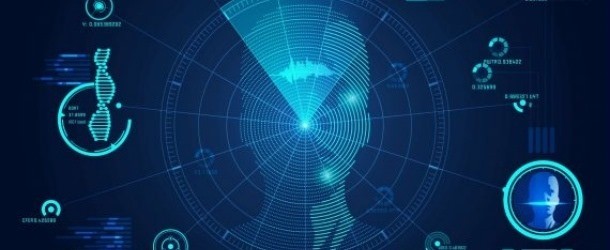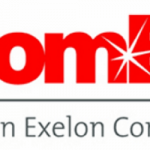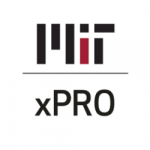FactBasedInsight: Quantum Imaging, Sensing & Timing Outlook 2020: Part Two in Series

(FactBasedInsight) Welcome to our continuing 2020 series by FactBasedInsight. Today, we pick up Part Two of the ‘Quantum Imaging, Sensing & Timing Outlook 2020.”
Pointers to the future
Computational innovation – increasingly central
Quantum sensing and imaging techniques produce raw data in prodigious quantities, often with its own unique properties and statistical character. New post-processing techniques are required to get the best from this data. Increasingly this cannot just be an afterthought.
Even early initiatives such as Horiba’s FLIMERA point to the importance of software development as part of the project. In a second generation of developments being considered at QuantIC, such as ‘through-body imaging’ or ‘endoscopy via a single optical fibre’, new techniques for reconstructive 3D imaging will be to the fore. This moves beyond traditional imaging, as Miles Padgett (QuantIC and Univ. of Glasgow) points out “We are not just imaging ballistic photons anymore, we are building decision engines based on all the data available”.
Advanced computational techniques from quantum error correction are also set to unlock one of the most far reaching applications for quantum networks. In principle the fidelity of quantum sensors can be improved when they are entangled (scaling as n rather than √n). In practice such technology is in its infancy and the presence of noise and losses would appear to overwhelm the potential benefit. A recent arXiv paper from Zhuang, Preskill and Jiang points to how continuous-variable quantum error correction can be used to restore the advantage in sensitivity [81]. If this result stands, it will encourage those with the most far reaching vision of what a Quantum Internet can offer. It also reminds us of the synergies and connections between seemingly different disciplines in the wider quantum sector.
Quantum radar – over hyped but still important
Quantum radar attracted much popular press speculation in 2019 due to the perceived threat it poses to stealth aircraft technology. However, most experts in the West remain sceptical of the claims made for the prototype announced by China’s CETC.
An initial challenge is that the popular term ‘quantum radar’ can be interpreted to include a wide variety of techniques, some quite modest. It can mean simply using a precise quantum clock to reduce oscillator noise in a conventional radar system. Or it can mean using a QRNG to randomise pulse timing and make the radar more difficult to detect or spoof. More ambitiously, it can mean emitting photons in pairs, so that the (conventional) correlation can be used to reject noise. It can mean working with single photons in parts of the spectrum where that hasn’t been done before, such as microwave. Only the most advanced notion, and the most difficult to achieve, would use genuinely entangled photons to reject attempts to spoof the system. Miles Padgett comments “The performance gains for simple quantum radar techniques are likely to be modest. Even more advanced techniques may not be as transformational as the popular hype suggests”.
These techniques could still give a useful military edge. An Austrian led team has recently reported on arXiv the demonstration of a key enabling technology, the illumination and detection of a target using correlated microwave photons, albeit at a range of just 1m [79]. If this result stands, it will show that the race to research and develop this technology is indeed making progress.
To watch in 2020
Imaging – Computational innovation is increasingly right at the leading edge. Watch out for techniques from machine learning and Bayesian inference becoming a key differentiator for advanced post-processing applications.
Gravity – Two complementary gravimeters demonstrate their paces on Mt Etna in 2020. An absolute quantum gravimeter developed by Muquans (a French startup) and a low-cost MEMS-based device, the Wee-g, designed for long-term multi-node installation (developed as part of UK NQTP) [75]. If this trial is a success, applications could also include monitoring hydrocarbons and water reservoirs. Expect to see Wee-g emerge as a startup.
Underground Survey – The Gravity Pioneer consortium, led by RSK, is targeting practical site surveys in civil engineering [75]. Better detection of holes underground is potentially immensely useful. The UK alone is projected to spend £319b on utility street works 2013-2030 and much of the cost comes from digging holes in the wrong place. Watch out for early indications that this new quantum technology is starting to outperform existing solutions (e.g. the Scintrex CG-6) in the field.
Navigation – Tracking your position without reliance on GPS (or any other vulnerable GNSS) has obvious defence applications, as well as in other situations where a signal may not be available. iXblue and M Squared are each developing systems that seek to use quantum cold atom technology to realise this goal. Each have now conducted waterborne tests of a development device[44,75]. ColdQuanta are also actively targeting this application that they call ‘QPS’ [69]. Don’t expect a commercial device yet, but could we see a firm roadmap to commercialisation emerging?
Precise Timekeeping – The Kairos consortium, led by Teledyne e2V, is building a pre-production prototype of a miniature atomic clock [75]. The rack mounted unit under development will bring precise timing to critical infrastructure such as data comms, 5G mobile networks, energy supply and financial transaction time stamping – without the vulnerability of reliance on GPS/GNSS time signals. A feature of the consortium is strong involvement from these potential user communities who are set to evaluate a prototype in 2020. Will a positive reception lead to wider publicity for this serious problem and its potential solution?
Diamonds on chips – MIT researchers have successfully integrated a NV diamond sensor on a 200 µm × 200 µm CMOS chip [78]. Watch out as this enabling development accelerates the application of NV diamond technology in quantum sensing, quantum communications and quantum computing applications [78].
Demystifying Quantum radar – Popular hype has created unrealistic assumptions surrounding this technology. Watch out for a QuantIC whitepaper setting out realistic performance envelopes.




















